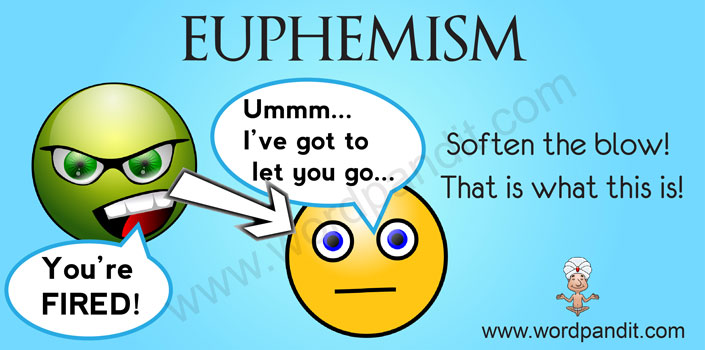Epithet
An epithet (from Greek: ἐπίθετον epitheton, neut. of ἐπίθετος epithetos, "attributed, added") or byname is a descriptive term (word or phrase) accompanying or occurring in place of a name and having entered common usage.
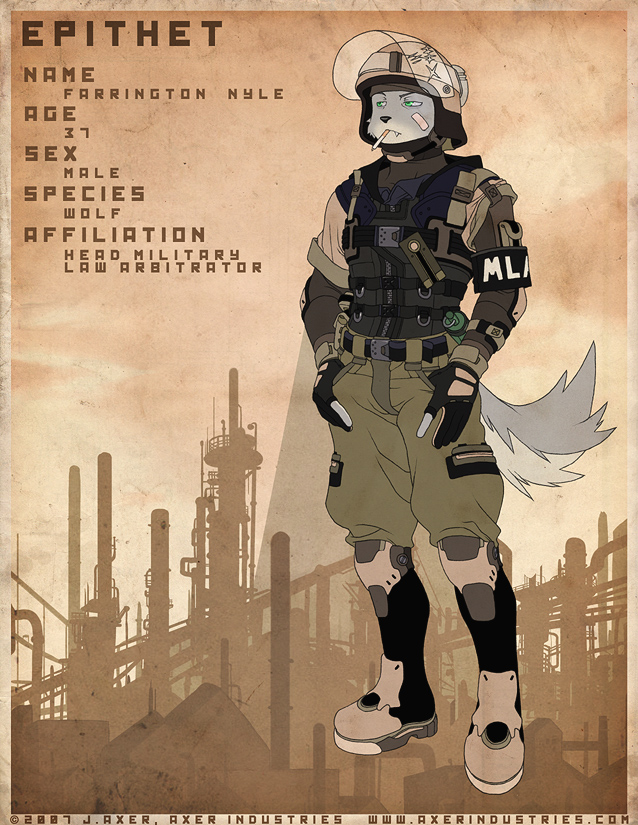
Epithets may be classified from different standpoints: semantic and structural. Semantically, epithets should be divided into two main groups: affective (associated) and figurative (unassociated).
Structurally, epithets can be viewed from the angle of composition and distribution. From the point of view of their compositional structure epithets may be divided into simple, сompound, phrase and sentence epithets.
Galperin and Kukharenko classify epithets from at least two standpoints - semantic and structural
Semantically epithets are looked at from different angles, which is reflected in the following:
Galperin
Associated epithets are those that point to a feature which is essential to the object they describe: the idea expressed is to a certain extent inherent in the concept of the object, as in: 'darkforest \ fantastic terrors \ 'dreary midnight'.
Unassociated epithets are attributes used to characterize the object by adding a feature not inherent in it. i.e. a feature which may be so unexpected as to strike the reader by its novelty. The adjectives do not indicate any property inherent in the objects but fitting in the given circumstances only, as in 'heart-burning smile',
'voiceless sands', 'bootless cries'._
Note: As far as novelty is concerned epithets can be trite and genuine. Through their long run some of the latter have become fixed without losing their poetic flavour. Such epithets are mostly used in folk songs and ballads.
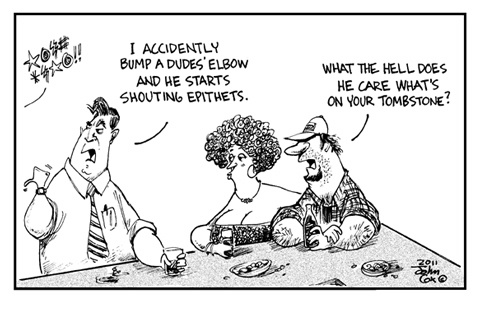
Kukharenko
Affective (or emotive proper) epithets serve to convev the emotional evaluation of the object by the speaker. Most of the qualifying words found in the dictionary can be and are used as effective epithets (e.g. gorgeous, magnificent, atrocious)
Figurative for transferred; epithets are
formed of metaphors, metonymies and similes expressed by adjectives. Thus epithets can also be based on similarity of characteristics, on nearness of the qualified objects, and on their comparison respectively. The third and the first types can be found in this:
7 cannot imagine what Bosch-like picture of Ware Commons Mrs Pouiteney had built up over the years; what satanic orgies she divined behind every tree...' (Fowles) As for the metonymic one. study this: 'Her painful shoes slipped off (Updike)
Note: Skrebnev points out that epithets can be metaphorical, metonymic and ironical.
As far as structural division is concerned, the classifications of the scholars have more points in common. Despite the differences in terms, hi essence they are very much alike. The table below contrasts these two approaches.
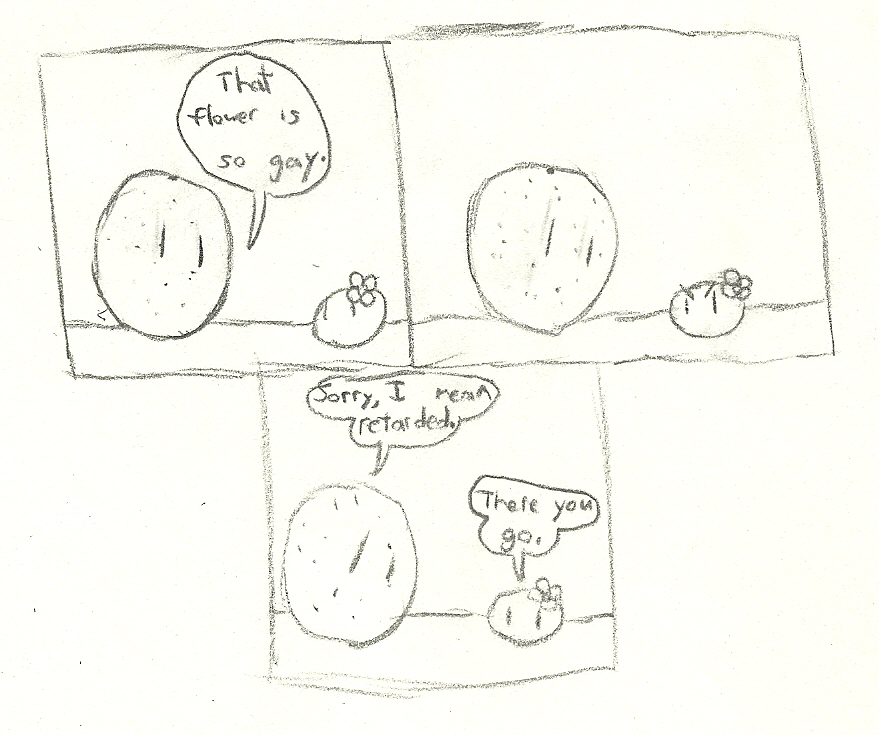
Epithets [Structurally]
Galperin
Simple (single) epithets are ordinary adjectives (one epithet is used at a time), as in ' the mysterious woman'.
Compound epithets are built like some compound adjectives as in 'cloud-shapen giant \
Note: Some of them can be based on a simile, as in 'Bosch-like
Phrase epithets can consist of a phrase or even a sentence, in which words are crammed into one language unit. Structural elements generally include: (a) the words expression, air, attitude, and others which describe behaviour or facial expression: (b) attributive clauses beginning with that. Phrase epithets are usually hyphenated, thus pointing to the temporary structure of the compound word. They always produce an original impression. For instance, 'a move-if-you-dare expression' (J. Baldwin)
String
The suing (chain) of epithets gives a many-sided description of the object. But in the enumeration of comparatively homogeneous attributes there is always a suggestion of an ascending order of emotive elements, culminating in the last one. as in 'You're a scolding, unjust, abusive, aggravating, bad old creature' (Dickens).
Reversed (inverted) epithets are composed of two nouns linked in an of-phrase. The subjective, evaluating, emotional element is embodied not in the noun attribute but in the noun described, as in 'a small barrel of a woman '. The epithets like these are called reversed or inverted as what is syntactically an attribute (of a woman) is, in fact, the word which is really defined.
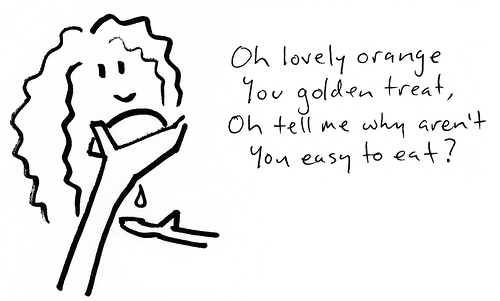
Kukharenko
Simple (single) epithets are ordinary adjectives (one epithet is used at a time), as in ' the mysterious woman'.
Pair epithets are represented by two epithets joined by a conjunction or asyndeti-cally, as in: 'wonderful and incomparable beauty7' (Oscar Wilde) or 'a tired old town' (Harper Lee). They are often united by alliteration, as in: 'everyone would be on the lookout of a masked and muffled man' (H G. Wells).
Phrase epithets can consist of a phrase or even a sentence, in which words are crammed into one language unit. Structural elements generally include: (a) the words expression, air, attitude, and others which describe behaviour or facial expression: (b) attributive clauses beginning with that. Phrase epithets are usually hyphenated, thus pointing to the temporary structure of the compound word. They always produce an original impression. For instance, 'a move-if-you-dare expression' (J. Baldwin)
The chain of epithets gives a many-sided description of the object. But in the enumeration of comparatively homogeneous attributes there is always a suggestion of an ascending order of emotive elements, culminating in the last one. as in 'You're a scolding, unjust, abusive, aggravating, bad old creature' (Dickens).
Inverted epithets
are composed of two nouns linked in an of-phrase. The subjective, evaluating, emotional element is embodied not in the noun attribute but in the noun described, as in 'a small barrel of a woman '. The epithets like these are called reversed or inverted as what is syntactically an attribute (of a woman) is, in fact, the word which is really defined.
Two-step epithets are called so because The process of qualifying seemingly passes two stages:
The qualification of the object and the qualification of the qualification itself as in 'a distinctly saturnine cast'.
Two step epithets have a fixed structure of Adv + Adj model.
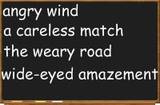
Examples Of Epithet
In Sentences
-Sitting by his side, I watched the peaceful dawn.
-My careful steps reached the attic.
-Her stifled laughter made everybody nervous.
-In the face of such a tragedy, his laughing happiness seemed queer.
-I had reached a delicate corner.
-The idle road stretched for miles.
Oxymoron
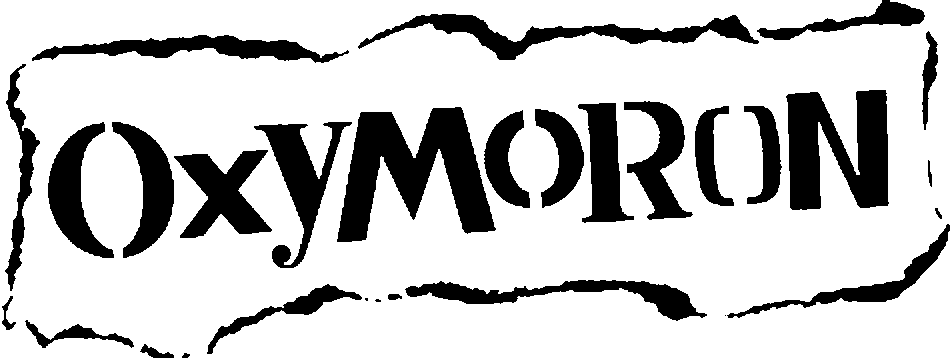
An oxymoron (plural oxymora or oxymorons) (from Greek ὀξύμωρον, "sharp dull") is a figure of speech that combines contradictory terms.
Types of Oxymoron:
Single-word Oxymora Composed of Dependent Morphemes
The more in oxymoron also gives us the more in sophomore, a "wise fool" – and there are indeed many sophomoric sophomores. Other examples: pianoforte ("soft-loud"), preposterous ("before-after"), and superette ("big-small").
Single-word Oxymora Composed of Independent Morphemes
Two meaning-bearing elements that could each be a word in itself are welded together into a single word: spendthrift, bridegroom, bittersweet, ballpoint, speechwriting, firewater and someone.

Logological Oxymora
If we view words as surface letter combinations and disregard meaning, we note that the word nook joins the opposing words no and OK, and the name Noyes, no and yes. I welcome additional specimens from Word Ways readers.
Natural Oxymora
Most speakers of English who know the definition of an oxymoron would have little trouble identifying the pairs inside out, student teacher, working vacation and small fortune as oxymora. I call this major category of oxymoronology "natural" because the perception of these duos as oxymora is relatively direct and effortless and does not depend on plays on words or personal values. Among the tens of additional examples:
industrial park open secret
sight unseen loyal opposition
idiot savant light heavyweight
original copy final draft
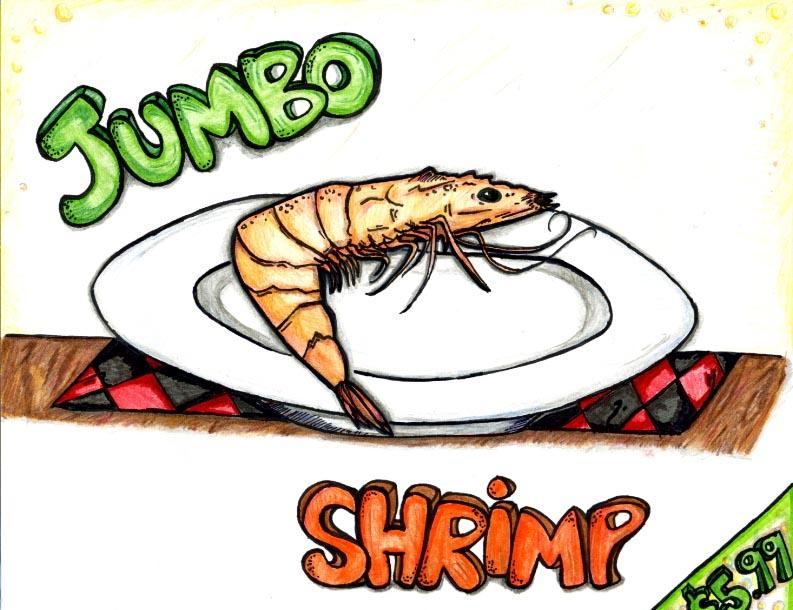
Punning Oxymora
Probably the best-known oxymoron in the United States is one from comedian George Carlin's record "Toledo Window Box," the delightful jumbo shrimp. I submit that the popularity of jumbo shrimp springs in part from an invitation to leap from an apparent meaning to a less-apparent one. While the meaning of jumbo as "large" is obvious, we must rise above the surface significance of shrimp, "decapod crustacean," to the more elevated "small." This is the stuff that punning is made of, the compacting of two meanings into a verbal space that they do not occupy in ordinary discourse. Thus, flat busted relies on the multiple meanings of the second word, "financially broke" and "breasts." This process is at work in the likes of even odds, baby grand, cardinal sin, female jock, indoor bleachers and death benefit. Punning can lurk even in single-word oxymora such as wholesome.

Crafted Oxymora
Some compact paradoxes have about them a sense of consciousness contrivance and crafting, as when Stephen Douglas was dubbed the Little Giant and Tom Landry approached a Super Bowl saying that his team was confidently scared. When we say same difference, global village, accidentally on purpose, "it went over like a lead balloon," and "keep it down to a dull roar," we are likely to be more aware of the collision of opposites than when we say old news, indoor bleachers and death benefit.
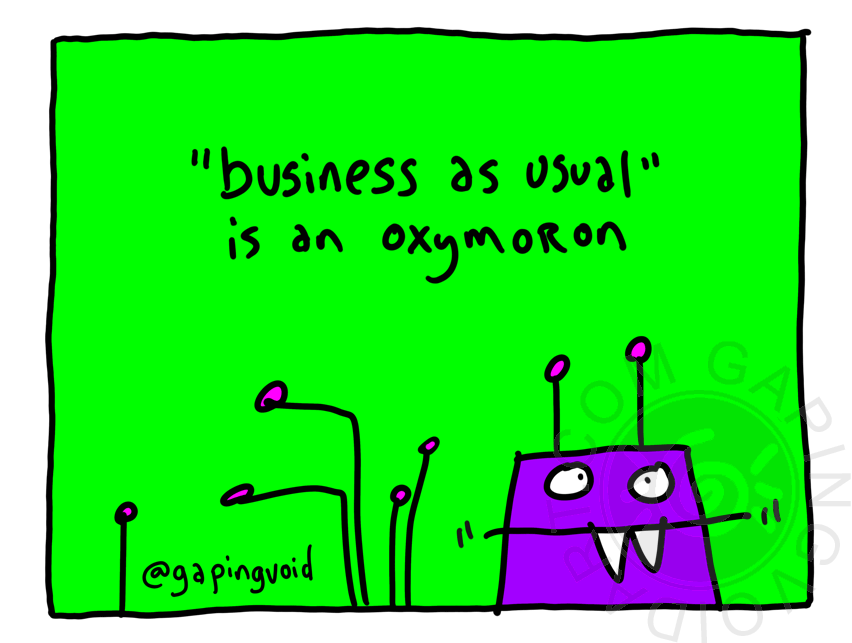
Literary Oxymora
Brightly crystallized forms of oxymoronic language become art in literature created by our greatest writers:
hateful good (Chaucer)
expressive silence (Thomson)
melancholy merriment (Byron)
parting is such sweet sorrow (Shakespeare)
scalding coolness (Hemingway)
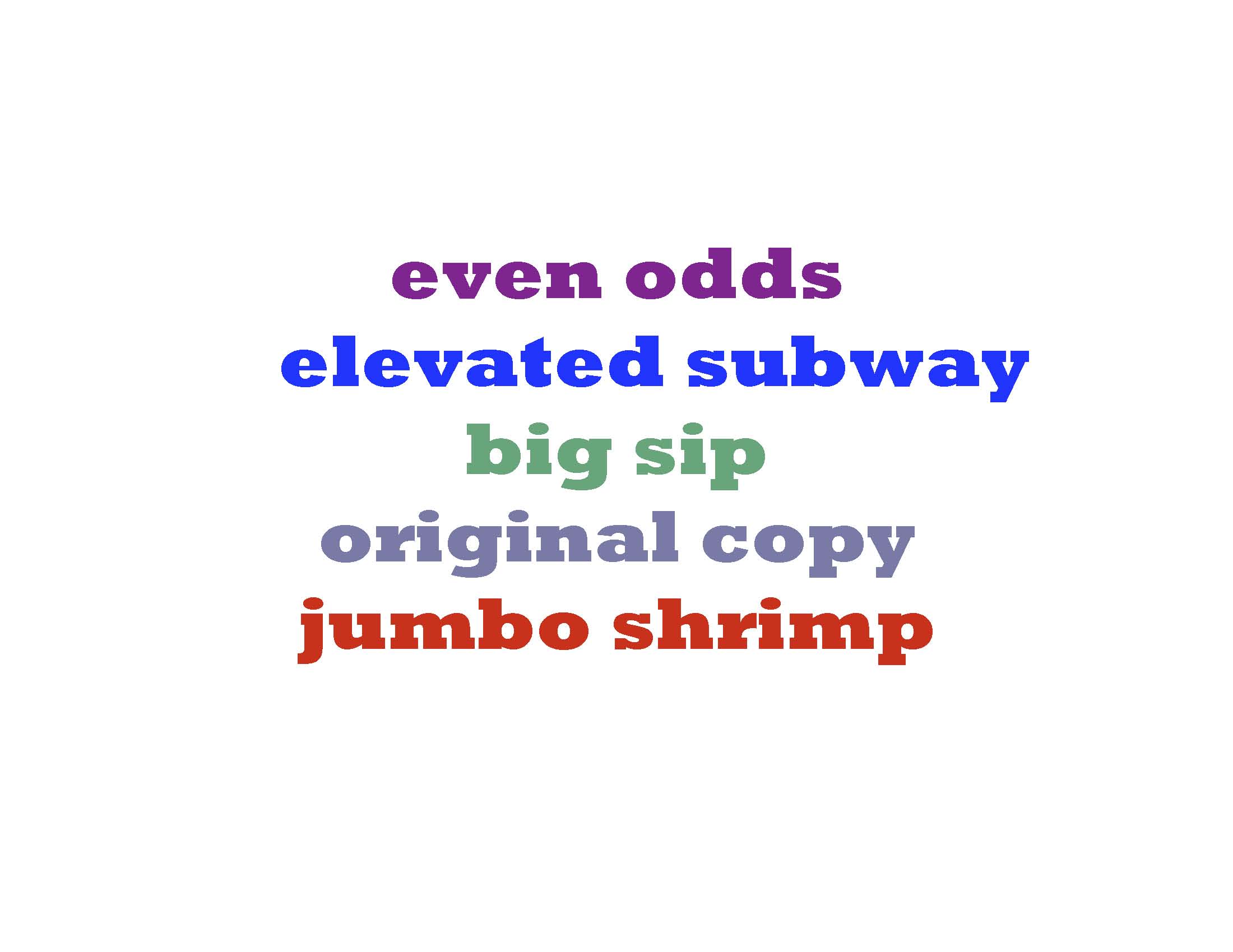
Doublespeak Oxymora
When people consciously fabricate oxymoronic combinations with the purpose of confusing us, we enter the world of doublespeak, defined by William Lutz in Doublespeak as "language that pretends to communicate but really doesn't. It is language that makes the bad seem good, the negative appear positive, the unpleasant appear attractive or at least tolerable... It is language that conceals or prevents thought." Oxymora like:
genuine imitation virtually spotless
real counterfeit diamonds mandatory option
new and improved terminal living
constitute language that, according to Lutz, "avoids or shifts responsibility... is at variance with its real or purported meaning."
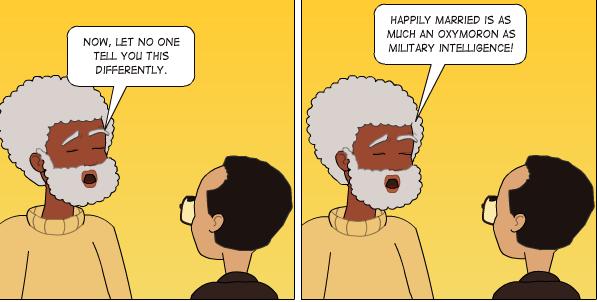
Opinion Oxymora
When we inject our personal values and editorialize unabashedly, we expand our oxymoronic repertoire considerably. Those of us who spout oxymora to entertain others quickly learn that opinion (or editorial) oxymora ordinarily evoke the roundest laughs from an audience:
military intelligence non-working mother
young Republican war games
peacekeeper missile business ethics
student athlete Iranian moderate
designer jeans rock music
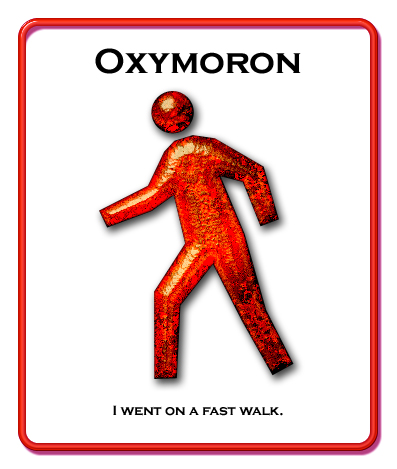
Hyperbole.
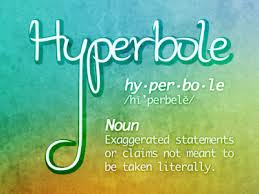
Hyperbole is a figure of speech that uses an exaggerated or extravagant statement to create a strong emotional response. As a figure of speech it is not intended to be taken literally. Hyperbole is frequently used for humour.

Examples of hyperbole are:
They ran like greased lightning.
He's got tons of money.
Her brain is the size of a pea.
He is older than the hills.
I will die if she asks me to dance.
She is as big as an elephant!
I'm so hungry I could eat a horse.
I have told you a million times not to lie!
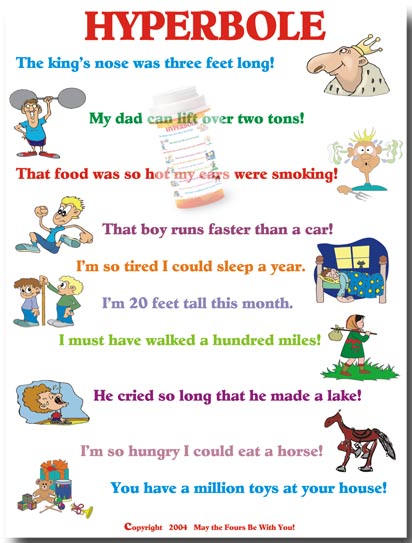
Understatement
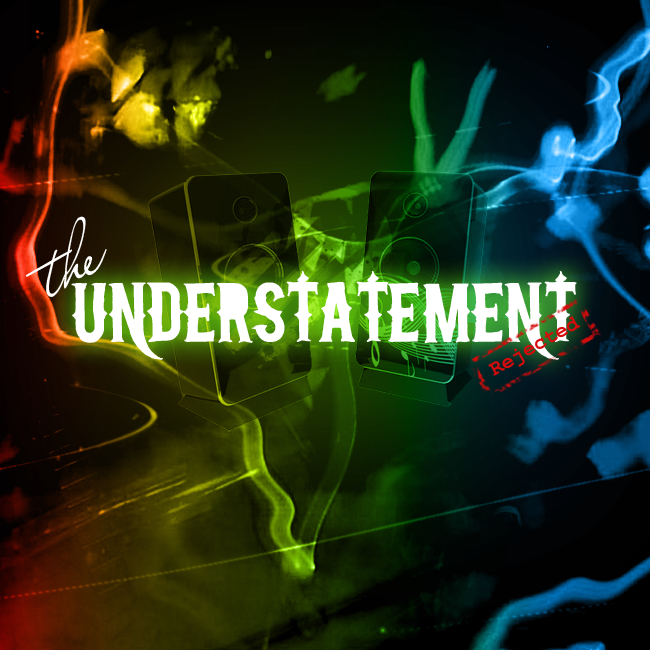
Understatement is a figure of speech in which there is a contrast between the description and reality. As such, understatement can be used to reflect modesty, sarcasm, derogatory or complimentary tone. Understatement literally refers to what is not being said.

Examples Of Understatement
"It's a bit yellow" - while describing a very yellow canary.
"There is some music by Beethoven in his Ninth Symphony" - while describing Beethoven's famous work.
"The desert is sometimes dry and sandy" - While describing the driest desert in the world.
"It is just a little cool today" - when the temperature outside is 5° below zero.
"The food was tolerable" - on the food that was prepared by the best chef in the world.
"The cars drove at a fair clip" - while watching a car race.
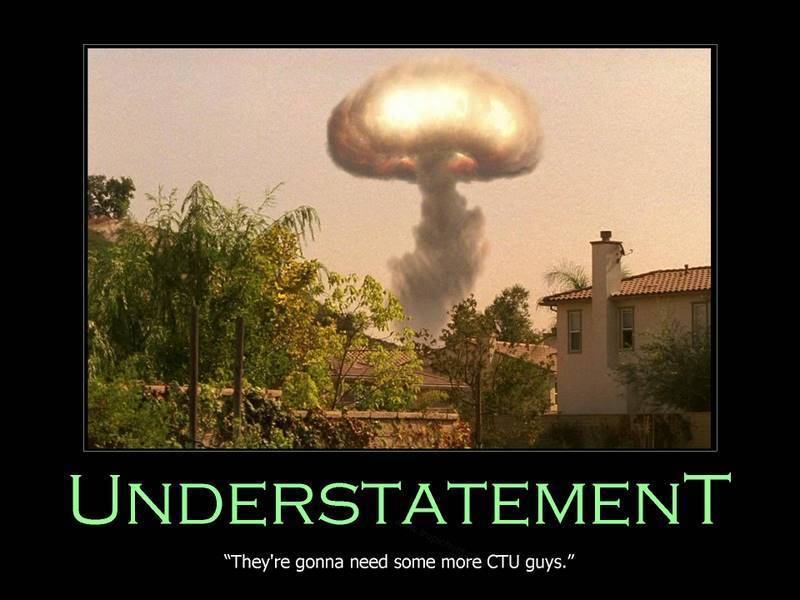
Periphrasis
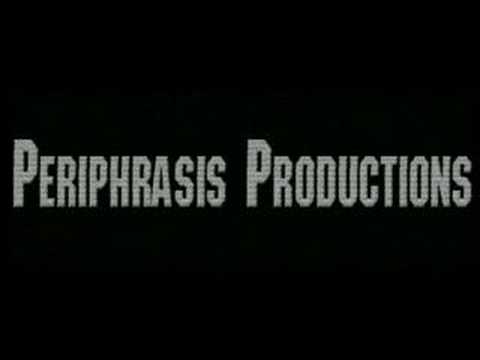
Periphrasis - is a round - about way of speaking used to name some object or phenomenon. Longer-phrase is used instead of a shorter one. Some periphrasis are traditional.
e. g. The fair sex.
My better half.

Periphrasis are divided into:
1. Logical - based on inherent properties of a thing.
e. g. Instrument of destruction, the object of administration.
2. Figurative - based on imagery: metaphor, metonymy
e. g. To tie a knot - to get married; in disgrace of fortune - bad luck.

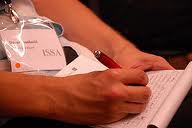
Euphemism
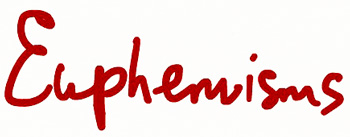
A euphemism is a generally innocuous word or expression used in place of one that may be found offensive or suggest something unpleasant.[1] Some euphemisms are intended to amuse, while others use bland, inoffensive, and often misleading terms for things the user wishes to dissimulate or downplay. Euphemisms are used for dissimulation, to refer to taboo topics (such as disability, sex, excretion, and death) in a polite way, and to mask profanity. The opposite of euphemism roughly equates to dysphemism.
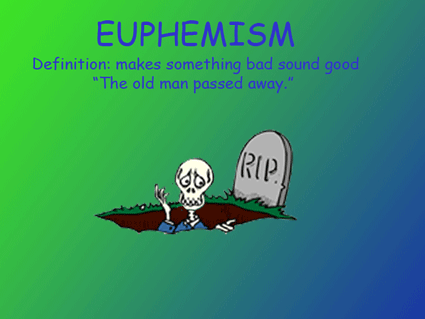
Examples of euphemisms:
-Ample proportions (Fat)
-Armed intervention (Military attack)
-Asleep with Jesus (Dead)
-Bought the farm (Died)
-Breathe one's last (Die)
-Broad in the beam (Fat)
-Bite the dust (Die)
-Eternal rest (Death)
-Laid off (Unemployed) (Origin)
